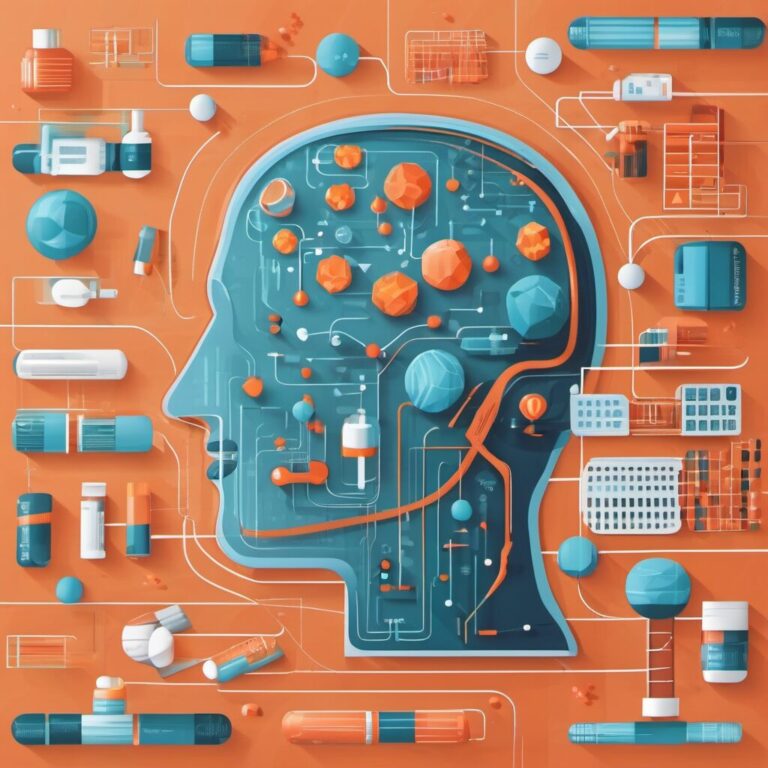- Your cart is empty
- Continue Shopping
Understanding Adderall: Uses, Effects, and Risks
- Pharmacy
- Posted on
-
by Bee Honey
- 0 comments

Introduction:
Adderall is a widely recognized medication primarily prescribed for the treatment of attention deficit hyperactivity disorder (ADHD) and narcolepsy. However, its popularity has also led to its misuse and abuse, especially among students and young adults seeking improved focus and productivity. In this comprehensive guide, we’ll delve into the uses, effects, and risks associated with Adderall.
What is Adderall? Adderall is a central nervous system stimulant composed of two main ingredients: amphetamine and dextroamphetamine. These stimulants work by increasing the levels of certain neurotransmitters in the brain, namely dopamine and norepinephrine. This process helps to improve focus, attention, and impulse control in individuals with ADHD, and it also promotes wakefulness in those with narcolepsy.
Uses of Adderall:
-
- ADHD Treatment: Adderall is FDA-approved for the treatment of ADHD in both children and adults. It helps to mitigate symptoms such as inattention, hyperactivity, and impulsivity, allowing individuals to better manage their daily activities and responsibilities.
-
- Narcolepsy Management: Adderall is also prescribed to individuals with narcolepsy, a chronic sleep disorder characterized by excessive daytime sleepiness and sudden episodes of sleep. By promoting wakefulness, Adderall can help individuals with narcolepsy stay alert and combat daytime drowsiness.
Effects of Adderall:
-
- Improved Focus and Concentration: One of the primary effects of Adderall is enhanced focus and concentration. Many users report feeling more alert, motivated, and able to concentrate on tasks for extended periods.
-
- Increased Energy Levels: Adderall stimulates the central nervous system, leading to increased energy levels and wakefulness. This can be particularly beneficial for individuals struggling with fatigue or daytime sleepiness.
-
- Enhanced Cognitive Performance: Some users experience improvements in cognitive performance, including memory, processing speed, and problem-solving abilities. This effect is often sought after by students and professionals seeking to boost their academic or work performance.
Risks and Side Effects: While Adderall can be highly beneficial when used as prescribed, it also carries certain risks and potential side effects, especially when misused or abused.
-
- Dependency and Addiction: Adderall has a high potential for abuse and addiction, particularly among individuals who misuse it for its stimulant effects. Prolonged misuse can lead to physical and psychological dependence, making it difficult for individuals to stop using the drug.
-
- Cardiovascular Effects: Adderall can increase heart rate and blood pressure, which may pose risks for individuals with pre-existing cardiovascular conditions. It’s essential to monitor cardiovascular health regularly while taking Adderall.
-
- Psychiatric Symptoms: Some individuals may experience psychiatric side effects such as anxiety, agitation, or psychosis while taking Adderall. These symptoms should be reported to a healthcare provider promptly.
-
- Sleep Disturbances: Adderall’s stimulant effects can interfere with sleep patterns, leading to insomnia or disrupted sleep. It’s recommended to take Adderall early in the day to minimize its impact on sleep.
Tips for Safe Use:
-
- Follow Prescribed Dosage: It’s crucial to take Adderall exactly as prescribed by a healthcare provider. Avoid increasing the dosage or taking it more frequently than instructed.
-
- Regular Monitoring: Regularly check in with a healthcare provider to monitor the effectiveness and safety of Adderall treatment. Report any concerning symptoms or side effects promptly.
-
- Avoid Alcohol and Other Substances: Alcohol and certain medications can interact with Adderall, increasing the risk of adverse effects. Avoid consuming alcohol or other substances while taking Adderall.
-
- Proper Storage: Store Adderall securely away from children and pets, and keep track of the remaining medication to prevent misuse or accidental ingestion.
Conclusion:
Adderall is a potent medication with the potential to significantly improve the lives of individuals with ADHD and narcolepsy when used responsibly under medical supervision. However, it’s essential to be aware of its risks and potential side effects and to use it cautiously to minimize harm. By understanding the uses, effects, and risks associated with Adderall, individuals can make informed decisions about its use and prioritize their health and well-being. If you or someone you know is struggling with substance abuse or addiction, seek professional help and support.
